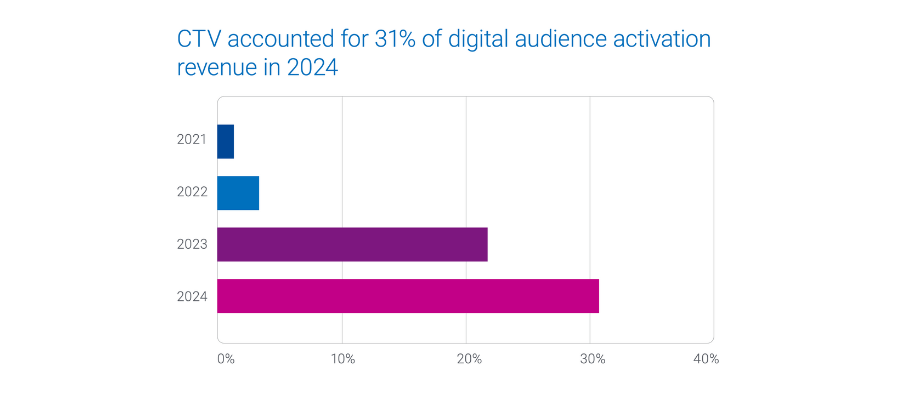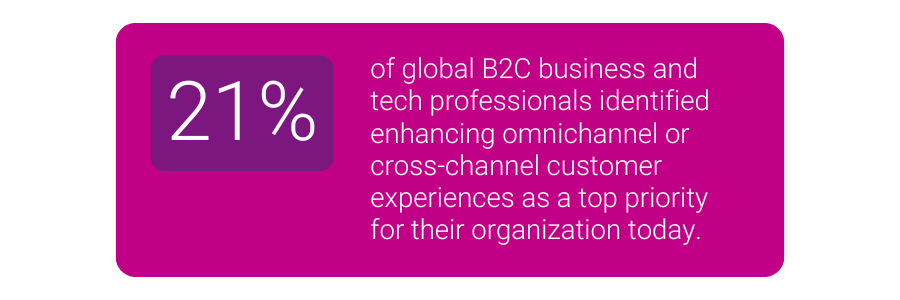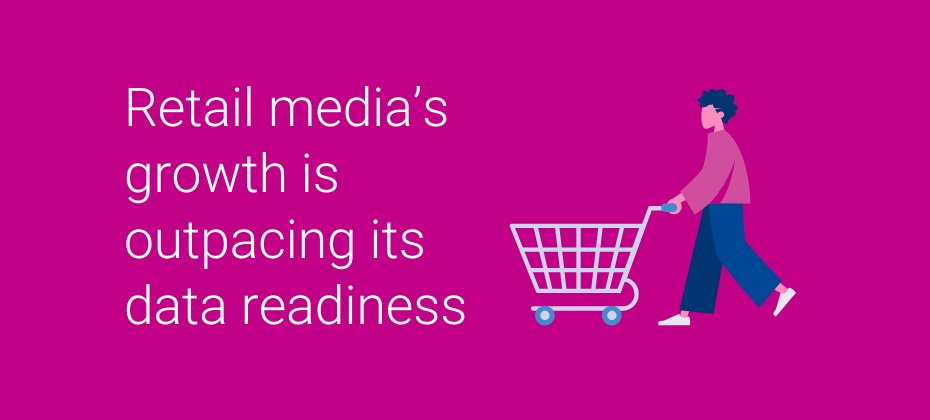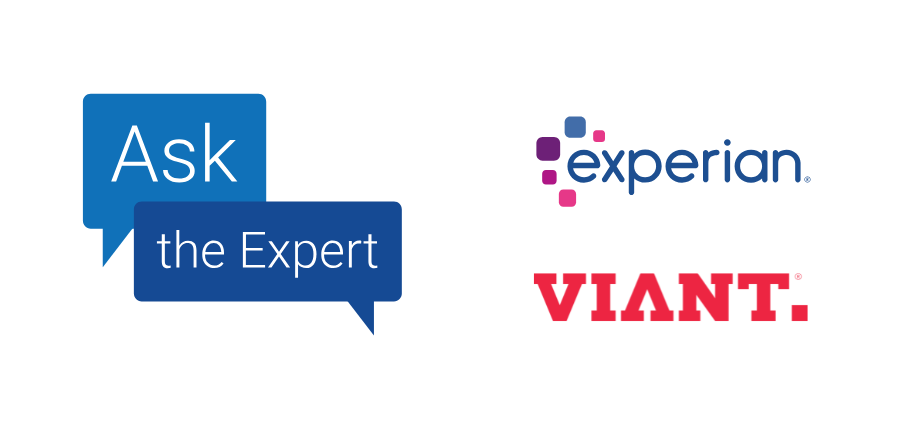
Agencies, platforms, and marketers stand at the crossroads of transformation, as privacy regulations tighten, technology accelerates, and consumer behaviors evolve. Yet these challenges also present extraordinary opportunities.
Our 2025 Digital trends and predictions report highlights five trends that will shape 2025 and digs into:
- What’s changing in the market
- How to keep learning about your customers
- How to reach your customers in different places
- How to measure what’s really working along the way
In this blog post, we’ll give you a sneak peek of three of these trends — from cracking the code of signal loss to tapping into the buzz around connected TV (CTV) and stepping up your omnichannel game. Think of it as a taste test before the main course. Ready for the full menu? Download our report to get the lowdown on all five trends.
1. Signal loss: A rich appetizer of alternate ingredients
As traditional cookies crumble, marketers need fresh ingredients to keep the flavor coming. Already, about 40% of browser traffic doesn’t support third-party cookies, and marketers are spicing things up with first-party data, alternative identifiers like Unified I.D. 2.0 (UID2) and ID5, and contextual targeting strategies. In fact, 50% more of our clients received alternative IDs (UID2, ID5, Hadron ID) in their Digital Graph in 2024 compared to 2023. The number of alternative IDs resolved to individuals in our Digital Graph increased by 30% year-over-year – as everyone looks beyond the cookie jar.

There is no secret sauce to replace cookies. Instead, expect a multi-ID recipe that brings together different identifiers, unified by an identity graph. This approach turns a fragmented pantry of data into a cohesive meal, giving you a complete view of your customer on every plate.
2. The rising power of CTV: A hearty entrée of opportunities
CTV is quickly becoming the main dish on the streaming menu, as viewers load up on their favorite shows. While CTV is slated to make up 20% of daily U.S. media consumption by 2026, advertisers are still holding back on pouring in the ad spend. To unlock its full flavor, marketers need to whip up solutions like frequency capping and unified audience activation.
Although CTV will account for 20% of daily U.S. media consumption by 2026, it’s projected to command only 8.1% of ad spend. Frequency capping and unified audience activation solutions will be key to unlocking CTV’s full potential.

By 2025, nearly half of CTV “diners” will choose free ad-supported streaming TV (FAST). Marketers need strategies to prevent ad overexposure. With 50% of U.S. consumers avoiding products due to ad overload, and 30% of marketers willing to increase their CTV spend if frequency capping improves, unified identity solutions help ensure every impression is served just right.
3. Omnichannel: A flavorful fusion plate
No one likes a one-flavor meal. Marketers are moving beyond single-channel “side dishes” to omnichannel “fusion feasts” that blend direct mail, digital, CTV, and retail media networks (RMNs) into a truly cohesive culinary experience. Even though only 21% of global B2C professionals currently put omnichannel at the top of their shopping list, the growing demand for seamless, audience-first campaigns is heating up.

In 2025, having an audience-first approach will be like having a perfect pairing for every course. Unified identity solutions act as your master sommelier, ensuring that each channel complements the next, and every customer enjoys a well-rounded, memorable journey.
Vertical trends: A dessert sampler from four unique kitchens
Different markets have their own signature flavors.
- In Auto, crossover utility vehicles (CUVs) claim 51% of new vehicle registrations, and consumers in the 35-54 age group and families are the primary buyers. Automotive marketers should prioritize CUV advertising with a strong focus on family-oriented and income-appropriate messaging
- In Financial Services, marketers need to anticipate shifts in consumer behavior tied to economic conditions, such as increasing demand for deposit products when interest rates are high. For insurance, aligning campaigns with life events, like new home purchases or marriage, can maximize engagement.
- In Healthcare, advertisers are prioritizing personalized, regulation-compliant campaigns that address social determinants of health (SDOH).
- In Retail, advertisers are increasingly activating on both CTV and social platforms, with many managing their own in-house campaigns. While larger brands often rely on media agencies, a shift toward in-house media buying is emerging among some bigger players, offering more control over audience targeting and performance metrics.
Our report covers each vertical’s unique menu, helping you select the right “ingredients” for your customers. With the top Experian Audiences on hand, you can create feasts that delight, nourish, and convert.
Hungry for more? Download our full menu
The three “samples” you’ve just tasted are just the starters. Our 2025 Digital trends and predictions report serves up five insights, complete with strategies, data, and tools to help you adapt, scale, and thrive in 2025.
Ready for the full menu? Download our report now and discover all five trends that will shape your marketing “cookbook” in 2025. Bon appétit!
Experian’s U.K. 2025 advertising trends
This article highlights the major advertising trends set to shape the U.S. market in 2025, but significant industry changes are happening on a global scale. For a more comprehensive look at worldwide trends, check out Experian’s U.K. 2025 advertising trends.
Latest posts

Retail media networks (RMNs) are on track to capture over $128 billion in ad spend by 2028, growing nearly 25% year over year. But behind this rapid expansion, RMNs face a challenge that could slow their momentum: they lack the complete picture of their customers. Retailers sit on a goldmine of first-party data—loyalty programs, online purchases, and in-store transactions—but their customer view is often fragmented, incomplete, or entirely anonymous. Without a strong identity foundation, RMNs struggle to: Scale advertiser reach beyond logged-in users Seamlessly match audiences across channels (CTV, programmatic, social) Deliver the precise targeting and measurement that advertisers demand The reality? Data is only valuable if it’s usable. And right now, too many RMNs are leaving value on the table. The identity challenge: If you can’t see it, you can’t monetize it Retailers have two types of customers: Known customers: Logged-in or self-identified users with purchase history and identifiable attributes. Unknown customers: Shoppers who browse, purchase in-store, or check out as guests—leaving behind only partial or anonymous data. Although many retailers have a loyalty program, it’s unlikely they are capturing a full view of all of their customers, especially outside of their four walls. When retailers don’t know their customers, they can’t effectively: Understand what messages will resonate with what audiences Extend their audiences beyond their owned platforms Provide advertisers with the reach and addressability they demand Accurately measure media performance and prove ROI But this challenge isn’t unsolvable—it’s an identity problem, and Experian is built to fix it. The missing link: Clean, enriched, and connected data Assuming your data is ready to activate is a costly mistake. Too often, RMN data is messy, siloed, and incomplete, making it difficult to deliver the precision and performance advertisers expect. Experian flips the script—helping RMNs transform fragmented signals into a complete, connected picture of their audience. Here’s how Experian helps RMNs go from fragmented to first-class Clean and optimize We organize messy customer data, removing duplicates and filling in gaps. Enrich and enhance Our insights add depth to profiles with demographics, behavior, and purchase intent signals. For example, an RMN may know a shopper recently bought a car seat—but not that they lease a luxury SUV. That auto data is critical to securing auto ad dollars, and it’s exactly the kind of insight Experian provides. Expand and connect Using digital identifiers like hashed emails (HEMs), mobile ad IDs (MAIDs), and connected TV (CTV) IDs, we help extend audience reach across every channel advertisers care about. The result? A complete and addressable audience picture that RMNs can activate confidently—on-site and off. We partnered with one of the largest RMNs in the world to overhaul its first-party shopper data ahead of industry changes. By anchoring its data to stable digital IDs, addressability skyrocketed by nearly 300%. That’s the Experian difference—turning guesswork into confidence. Retailers who master identity will win the RMN race In an increasingly competitive RMN landscape, identity isn’t optional—it’s everything. Advertisers demand scale, accuracy, and measurable impact. Only RMNs with a robust identity foundation will rise above the competition. RMNs that prioritize identity resolution and data enrichment will: Drive more revenue by increasing the size of their addressable audience Keep advertisers engaged with better targeting and measurement Capture RMN market share by offering scale and accuracy Don’t just compete—lead. Ready to transform? Experian will show you how Fixing data inside the RMN ecosystem is just the beginning. In part two, we’ll cover: Why RMNs should be activating their enriched first-party data across CTV, programmatic, and social. Why off-site expansion is the future of maximizing revenue. How Experian’s data and identity solutions power off-site activation. Experian isn’t just part of the RMN conversation. We’re driving it. Let’s talk. Connect with our team Latest posts

As privacy regulations, signal loss, and consumer expectations change, marketers face growing challenges in creating meaningful connections. In our latest Ask the Expert segment, Tom Wolfe, SVP at Viant, and Ali Mack, VP of AdTech Sales at Experian explore how first- and third-party data strategies, advancements in connected TV (CTV), and AI tools empower marketers to build smarter campaigns tailored to modern demands. Identity-driven advertising built on first-party data With the decline of traditional third-party signals and the rise of privacy-first advertising, first-party data is more important than ever. By collecting data directly from customers, marketers ensure they have accurate, user-consented data to fuel personalized advertising. Viant’s identity graph takes these first-party signals—such as email addresses, household locations, and phone numbers—and connects them with additional attributes in a privacy-safe way. This approach empowers marketers to build precise audience segments without relying on cookies, which Viant phased out over a decade ago. Combining first-party data and privacy-first solutions to build trust By combining first-party data strategies with privacy-first solutions, marketers can build long-term success while earning consumer trust. The Viant Household ID eliminates reliance on cookies while enabling secure, compliant campaign management. Additionally, Viant\’s partnerships with cleanrooms further protect their clients\’ data integrity and ensure smooth collaboration between trusted parties. Beyond safeguarding consumer information, the Viant ecosystem allows their clients to integrate data seamlessly from audience segmentation to campaign activation and reporting. How first and third party data work together While first-party data is crucial for precise, personalized advertising, it isn’t always sufficient—especially for smaller or emerging brands that haven’t yet amassed audience data. Third-party data plays a pivotal role in these scenarios by supplementing first-party insights, offering a broader view of consumer behavior, leading to new growth opportunities. Viant collaborates with partners like Experian to help marketers seamlessly merge their customer information with additional consumer insights. Viant and their clients benefit from Experian\’s identity data to match various identifiers such as hashed emails, device IDs, or other platform-specific tags and map them back to a single consumer profile. With a unified view of the consumer, marketers can refine targeting, expand their reach, and maintain consistency across channels. By utilizing first- and third-party data solutions, marketers can build well-rounded, effective campaigns that resonate with diverse audiences. “Our clients have embraced the Viant Household ID because it powers a comprehensive, seamless flow from segment creation to targeting, activation, and measurement.” Tom Wolfe, SVP Business Development, Viant CTV as a core marketing channel CTV is emerging as the core platform for immersive and effective advertising by merging the visual storytelling power of traditional TV with the precision of digital tools. Viant helps marketers optimize CTV capabilities by building connections between premium publishers and data, allowing marketers to personalize experiences. Whether it’s tailored ads for families watching a live sports event or pinpointing niche interests, CTV enables marketers to reach diverse audiences with meaningful ads. Beyond awareness, Viant drives results for their clients and monitors that performance across each stage of the funnel. Marketers can use the key insights to optimize their media buys on CTV and achieve even higher ROI. Viant takes CTV performance a step further with its direct access programs. Stronger data matching via publisher partnerships improves accuracy, helping marketers connect with their ideal audience. Viant’s recent data shows that campaigns incorporating CTV achieve a conversion rate of 12.89%, outperforming campaigns lacking it by a wide margin. This dramatic improvement highlights the power of precise targeting combined with Viant’s advanced CTV tools. For marketers, this translates to impactful storytelling supported by tangible results. “CTV drives high-level brand awareness via sight, sound, motion, and emotion, but it also powers activity through the funnel.” Tom Wolfe, SVP Business Development, Viant AI is streamlining marketing from start to finish AI is transforming advertising by automating tasks like performance tracking and audience segmentation, allowing marketers to focus on strategy and creativity. At Viant, AI is part of the company’s DNA, helping marketers drive more efficient and effective campaigns. With real-time data insights and streamlined processes, teams can quickly refine messaging and optimize budgets. This efficiency not only saves time but also empowers marketers to channel their energy into creating impactful strategies that resonate with their audiences. The integration of AI into Viant’s ecosystem also simplifies overall workflows, optimizing campaign execution from start to finish. With performance tracking made easier and segmentation automated, marketers can rely on data accuracy and actionable insights to make confident decisions. How Experian and Viant work together Experian\’s syndicated audiences—demographic, auto, TV, FLA (Financial Fair Lending Act), and more—are available within Viant\’s platform. Experian\’s partnership with Viant enables the deployment of custom audiences specifically designed to meet distinct campaign objectives. Together, Experian and Viant provide solutions that support first-party data strategies, third-party data integration, CTV optimization, AI-driven insights, and identity resolution, creating a cohesive and privacy-forward marketing ecosystem. “At Viant, we focus on the sensible, scalable, impactful opportunities.” Tom Wolfe, SVP Business Development, Viant Watch the full Q&A Visit our Ask the Expert content hub to watch the full conversation with Tom and Ali and learn more about Viant’s scalable identity solutions. About our expert Tom Wolfe, SVP Business Development, Viant As SVP of Business Development at Viant, Tom and his team forge strategic business partnerships that fuel the company\’s growth and business strategy. He is a seasoned industry veteran with more than 25 years of expertise in content distribution, advertising, and technology, particularly in CTV. Throughout his career, Tom has played a pivotal role in establishing and managing multiple businesses at major companies such as Roku, TiVo, YuMe, and Comcast. Additionally, he has provided valuable advisory services to organizations including VIZIO, Vice Media, and many others across the ecosystem. Tom holds a B.A. in Political Science from Lehigh University and has shared his knowledge as a guest lecturer at both New York University and Drexel University. Latest posts

At this year’s Shoptalk, one thing was crystal clear: Retailers are no longer just competing on price or product—they’re competing on experience. And in that race, customer expectations are not just the starting line—they’re the finish line, too. Over three days of discussions, demos, and side conversations, Shoptalk 2025 delivered a fresh look at how brands and advertisers are adapting to an increasingly blended retail environment. The show spotlighted not just what\’s new in retail media and AdTech—but how the industry is rethinking the entire shopper journey. What we heard again and again on the ground was this: there is no one-size-fits-all playbook anymore. Every retailer is navigating their own unique mix of identity, data, tech, and consumer needs. The winners will be those who stay nimble while staying connected to what customers actually want. Experience is everything Across sessions and show floor chats, the core message was this: customers expect more—and retailers must rise to meet that moment. Whether it’s a personalized in-store interaction or a seamless connected TV (CTV) ad experience, people want value, inspiration, and storytelling wherever they shop. That means digital and physical channels must work together effortlessly. Retailers aren’t just “digitizing” the in-store experience anymore—they’re rethinking how to make the entire shopping journey feel easy, consistent, and enjoyable. This shift isn’t just about touchpoints. It’s about changing the way retailers think about the customer experience. Loyalty isn’t a program, it’s every interaction Loyalty emerged as a major theme—one that goes well beyond points and perks. Speakers from Wayfair, DSW, and Lowe’s emphasized that every customer interaction, not just formal programs, should be viewed as an opportunity to build emotional loyalty. Sarah Crockett, CMO of DSW, shared that emotional tactics resonate more deeply than transactional rewards—echoing a broader shift toward customer-centric, experience-driven engagement. “Loyalty today isn’t just about perks. It’s about trust, connection, and knowing your customer on a deeper level. Every interaction is a chance to build that relationship.”Sam Zahedi, Sr. Enterprise Partnerships Manager Retail media gets real Retail media networks (RMNs) took center stage, but the tone is changing. With so many players flooding the space, retailers and advertisers alike are asking tougher questions: How do you stand out? How do you prove value? And perhaps most critically—how do you build trust? Standardization came up in several sessions, but as Harvey Ma from Sam’s Club MAP pointed out, standardization alone won’t fix what\’s been lost: foundational trust and transparency. Advertisers want more than impressions—they want insights, outcomes, and measurement they can count on. “There’s no one playbook—nor should there be. Every retailer, every RMN, and every customer is different. Success comes from building strategies as unique as the audiences they serve.”Anne Passon, Sr. Director, Sales, Retail Many brands came to our team asking how Experian can help extend their audiences into new environments like social and CTV. Here’s how we do it: We work with our RMN partners to take their organized, clean, complete, and highly usable customer records and expand them to include other digital identifiers. By adding digital IDs such as hashed emails (HEMs), mobile ad IDs (MAIDs), CTV IDs, and Universal IDs like Unified I.D. 2.0 (UID2) or ID5, we ensure that the retailer\’s entire customer base can be reached. On their own, RMNs only know the digital identity of a portion of their customer base. With Experian\’s help, they can add digital IDs to their entire customer base. As a result, marketers can reach all of an RMN\’s customers, including those whose identities were previously unknown. They can reach these customers both onsite and offsite, thanks to the array of addressable IDs we provide. This increase in addressability leads to higher revenue for the RMN. Moving at the speed of people One of the most thought-provoking moments came from Nikki Laughlin from McClatchy Media during a Brand Innovators session. She asked a simple but powerful question: How can we move at the speed of people if we’re always looking backward at data? It’s a challenge we’re hearing more often—marketers want to be proactive, not just reactive. That requires faster insights, cleaner connections between signals, and a shift from static audiences to living, evolving ones. Experian\’s identity and data solutions aren’t just about better targeting—they’re about helping brands activate smarter, faster, and with more confidence across the full media ecosystem. A marketplace of possibilities The best part of Shoptalk? The spontaneous moments. The side conversations where ideas turned into opportunities. We had several discussions that signaled new partnerships on the horizon—some with current clients, others brand new. What united them was a desire to co-create: to build something more tailored, more agile, more customer-first. Of course, there were also shared challenges. Retailers are navigating how to stay customer-centric while grappling with complex, sometimes controversial tech—from AI to influencers to evolving data privacy norms. But if there was one consistent thread, it was this: retailers are hungry for clarity and collaboration. Forget the playbook, follow the customer Shoptalk 2025 reminded us that while tech and trends come and go, the most successful retail strategies still start with one thing: knowing your customer. That’s what fuels smarter activation, stronger measurement, and more meaningful experiences—whether online, in-store, or across emerging media channels. If you\’re rethinking your retail strategy or want to explore how Experian can support your goals across identity, retail media, or CTV, let’s talk. Let\’s connect and explore what\’s possible Latest posts